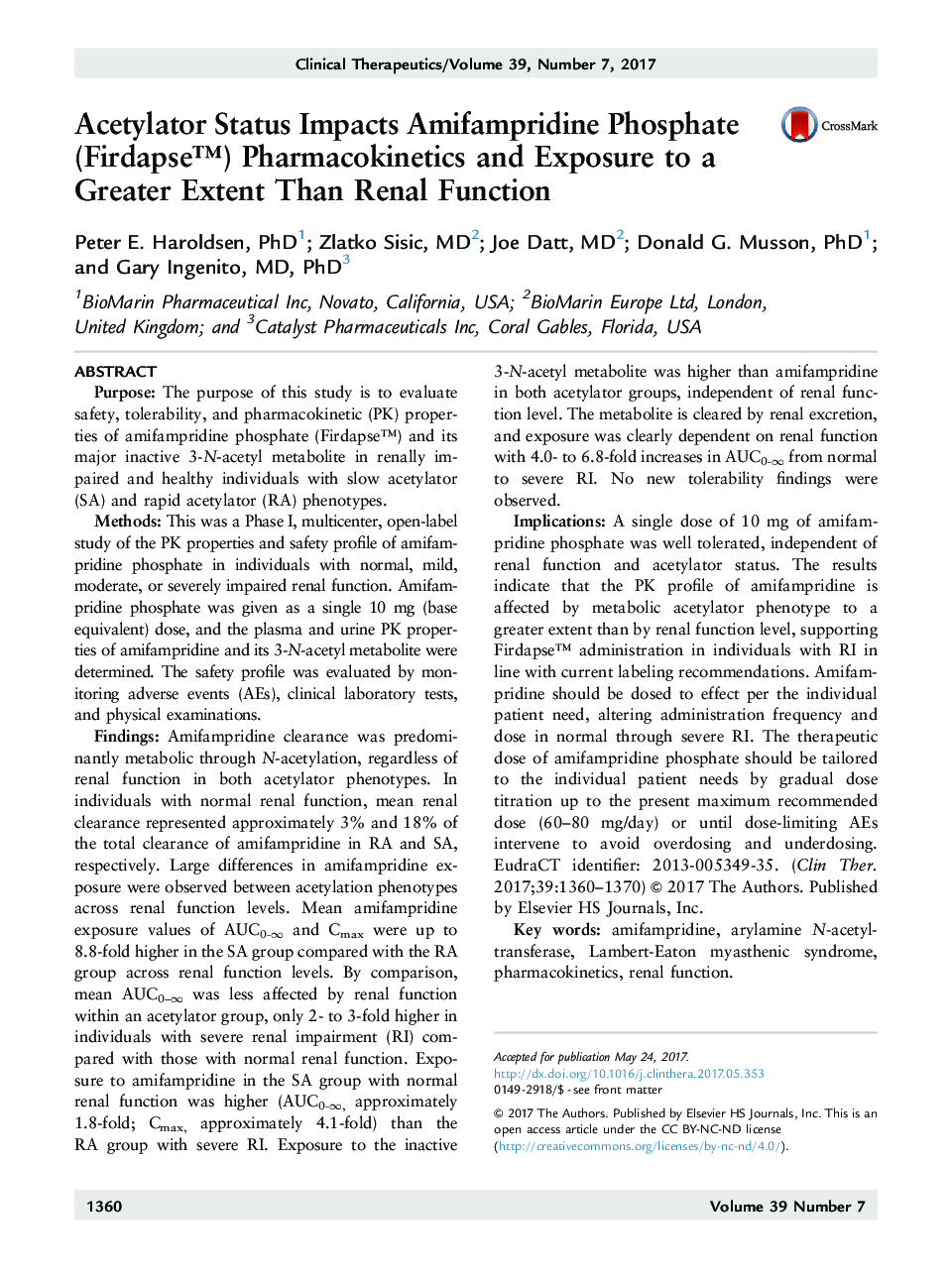| کد مقاله | کد نشریه | سال انتشار | مقاله انگلیسی | نسخه تمام متن |
|---|---|---|---|---|
| 5553720 | 1403012 | 2017 | 11 صفحه PDF | دانلود رایگان |

PurposeThe purpose of this study is to evaluate safety, tolerability, and pharmacokinetic (PK) properties of amifampridine phosphate (Firdapseâ¢) and its major inactive 3-N-acetyl metabolite in renally impaired and healthy individuals with slow acetylator (SA) and rapid acetylator (RA) phenotypes.MethodsThis was a Phase I, multicenter, open-label study of the PK properties and safety profile of amifampridine phosphate in individuals with normal, mild, moderate, or severely impaired renal function. Amifampridine phosphate was given as a single 10 mg (base equivalent) dose, and the plasma and urine PK properties of amifampridine and its 3-N-acetyl metabolite were determined. The safety profile was evaluated by monitoring adverse events (AEs), clinical laboratory tests, and physical examinations.FindingsAmifampridine clearance was predominantly metabolic through N-acetylation, regardless of renal function in both acetylator phenotypes. In individuals with normal renal function, mean renal clearance represented approximately 3% and 18% of the total clearance of amifampridine in RA and SA, respectively. Large differences in amifampridine exposure were observed between acetylation phenotypes across renal function levels. Mean amifampridine exposure values of AUC0-â and Cmax were up to 8.8-fold higher in the SA group compared with the RA group across renal function levels. By comparison, mean AUC0-â was less affected by renal function within an acetylator group, only 2- to 3-fold higher in individuals with severe renal impairment (RI) compared with those with normal renal function. Exposure to amifampridine in the SA group with normal renal function was higher (AUC0-â, approximately 1.8-fold; Cmax, approximately 4.1-fold) than the RA group with severe RI. Exposure to the inactive 3-N-acetyl metabolite was higher than amifampridine in both acetylator groups, independent of renal function level. The metabolite is cleared by renal excretion, and exposure was clearly dependent on renal function with 4.0- to 6.8-fold increases in AUC0-â from normal to severe RI. No new tolerability findings were observed.ImplicationsA single dose of 10 mg of amifampridine phosphate was well tolerated, independent of renal function and acetylator status. The results indicate that the PK profile of amifampridine is affected by metabolic acetylator phenotype to a greater extent than by renal function level, supporting Firdapse⢠administration in individuals with RI in line with current labeling recommendations. Amifampridine should be dosed to effect per the individual patient need, altering administration frequency and dose in normal through severe RI. The therapeutic dose of amifampridine phosphate should be tailored to the individual patient needs by gradual dose titration up to the present maximum recommended dose (60-80 mg/day) or until dose-limiting AEs intervene to avoid overdosing and underdosing. EudraCT identifier: 2013-005349-35.
Journal: Clinical Therapeutics - Volume 39, Issue 7, July 2017, Pages 1360-1370